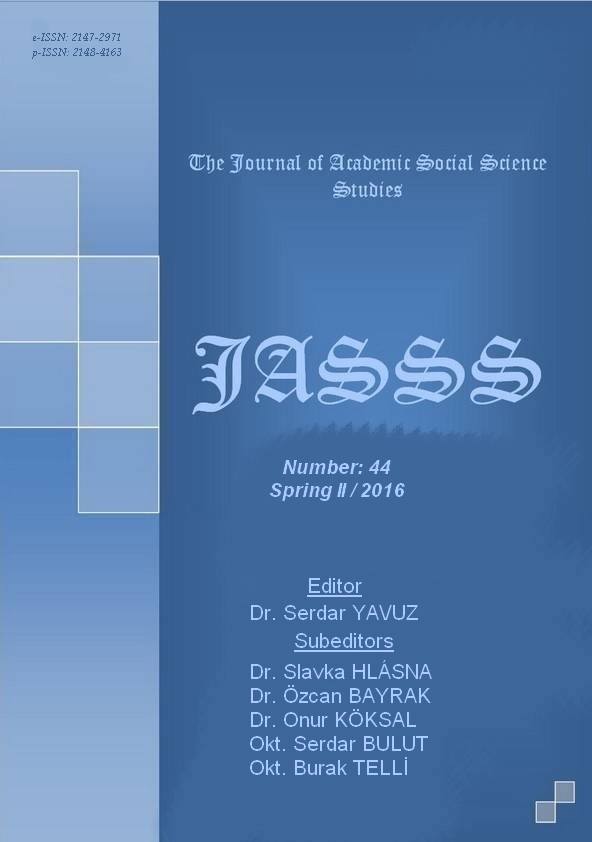Author :
Abstract
Tekirdağ, gerek nüfus artışı gerekse sanayileşme hızı ile son yıllarda Marmara Bölgesi’nin dikkat çeken şehirlerinden biri konumuna yükselmiştir. Beşeri parametrelerdeki bu hızlı yükseliş söz konusu şehirde çeşitli çevre sorunlarının da ortaya çıkmasını tetiklemiştir. Bu çevre sorunlarının başında şüphesiz ki hava kirliliği gelmektedir. Tekirdağ’da, 1990’lı yıllarda hız kazanmaya başlayan hava kirliliği, 2000’li yıllarda ciddi boyutlara ulaşmıştır. Bunun yanında, dönemsel olarak alınan tedbirler sayesinde hava kirliliği seviyesinde 2005 yılından itibaren hızlı bir düşüş meydana gelmiştir. Her ne kadar hava kirliliği sorunu Tekirdağ’da azalma eğiliminde olsa da günümüzde zaman zaman kükürtdioksit (SO2) ve partikül madde (PM) sınır değerleri büyük oranlarda aşılmaya devam etmektedir. Tekirdağ’da hava kirliliği üzerinde en fazla; nüfus artışı, sanayileşme, yüksek oranda fosil yakıt tüketimi ve egzos gazlarından kaynaklanan beşeri faktörler etkili olmaktadır. Bu faktörlerin yanında jeomorfolojik ve meteorolojik koşullar gibi çevresel faktörlerin de devreye girmesi, yaşanan hava kirliliğinin boyutlarına ve hissedilme oranına büyük oranda etki etmektedir. Bu çalışmada, Tekirdağ şehrindeki hava kirliliği ve bu kirliliği ortaya çıkaran beşeri ve ekonomik faaliyetlerin yanında; jeomorfolojik, klimatik ve meteorolojik parametreleri de göz önüne alan bazı coğrafi değerlendirmeler yapılmıştır. Bununla beraber, çalışmada çevresel gözlemlerin yanı sıra Ulusal Hava Kalitesi İzleme Ağı, Tekirdağ Meteoroloji Müdürlüğü, Tekirdağ Valiliği ve Tekirdağ Büyükşehir Belediyesi gibi kurumlardan sağlanan istatistiksel verilerden istifade edilmiştir.
Keywords
Abstract
In the recent years, Tekirdağ has risen to become one of the attention-grabbing cities of the Marmara Region both due to the increase in its population and the high level of industrialization. Such an increase in human parameters has also triggered the emergence of environmental problems in the city. Air pollution is undoubtedly the most important one among all other environmental problems. In Tekirdağ, air pollution began showing an increase in the 1990s, reaching remarkably high levels in the 2000s. By means of the measures taken periodically, air pollution has rapidly declined since 2005. However, despite the declining tendency in the level of air pollution in Tekirdağ, sulphur dioxide and particulate matter threshold values can sometimes be exceeded to a significant extent. In addition to the population growth and industrialization, some human factors such as the high consumption rate of fossil fuels and the emissions produced by motor vehicles, the number of which keeps increasing each passing day, all contribute to air pollution in Tekirdağ. Besides, environmental factors such as geomorphological and meteorological parameters also have an effect on the air pollution levels and the rate of sensing. This study presents a geographical analysis conducted by taking into account the air pollution level in Tekirdağ and human and economic activities leading to such pollution as well as the geomorphological, climatic and meteorological parameters. In addition to the environmental observations, statistical information provided by certain agencies such as the National Air Quality Monitoring Network, Tekirdağ Provincial Directorate of Meteorology, and Tekirdağ Governorate and Tekirdağ Metropolitan Municipality was used in this study.





